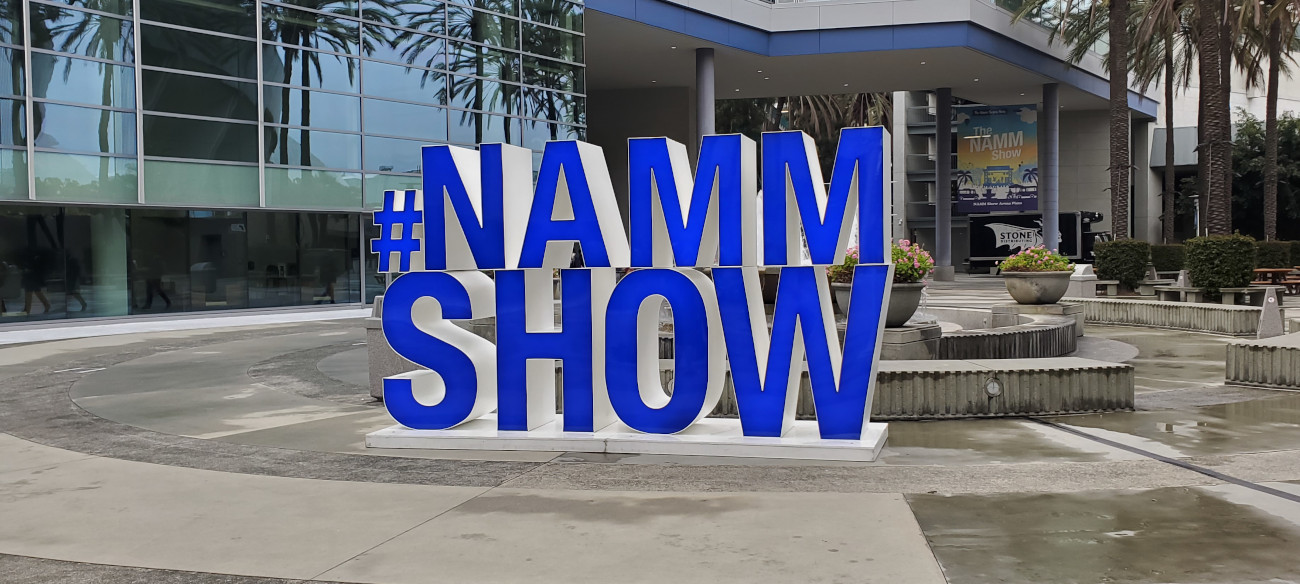 NAMM is always a great time to see the latest pianos. This was my first show since covid and despite being off-schedule in April (the show usually runs in January), it was nevertheless well represented. Many of the manufacturers opted out of this show because the upcoming show in 2024 is only 9 months away. These shows are a massive amount of work for presenters. When you think of how many pianos get moved and tuned, you can appreciate how much coordination and personnel are required to put together a booth and understandably, some manufacturers didn’t wish to present twice within one calendar year. These are the manufacturers who did attend this year’s show (in alphabetical order): C. Bechstein, Bösendorfer, Fazioli, Gebr. Schulz, A. Geyer, Hoffmann, Kawai, Knabe, Kohler, Mason & Hamlin, Pramberger, Schimmel, Seiler, Shigeru Kawai, Steingraeber, Yamaha, Zimmermann.
NAMM is always a great time to see the latest pianos. This was my first show since covid and despite being off-schedule in April (the show usually runs in January), it was nevertheless well represented. Many of the manufacturers opted out of this show because the upcoming show in 2024 is only 9 months away. These shows are a massive amount of work for presenters. When you think of how many pianos get moved and tuned, you can appreciate how much coordination and personnel are required to put together a booth and understandably, some manufacturers didn’t wish to present twice within one calendar year. These are the manufacturers who did attend this year’s show (in alphabetical order): C. Bechstein, Bösendorfer, Fazioli, Gebr. Schulz, A. Geyer, Hoffmann, Kawai, Knabe, Kohler, Mason & Hamlin, Pramberger, Schimmel, Seiler, Shigeru Kawai, Steingraeber, Yamaha, Zimmermann.
(Click on images below for full size)
My first interactions at the show were with piano designer, Colin Taylor. Formerly with Bösendorfer and then Brodmann, he travels the world in a variety of piano related manufacturing efforts. Presently, he works as a piano designer with both A. Geyer and Gebr. Schulz. I had not heard of Gebrüder (meaning brothers) Schulz before. I had an enjoyable conversation with Jakob Schulz, direct descendant of the family business. At the show they presented many upright pianos but also an unfinished Schulz grand piano that is a prototype for their up-and-coming line. Jakob’s father is the designer and combined with Colin Taylor’s contacts throughout Asia, they are putting together a great hybrid work between China and Germany. I look forward to seeing this in full production in January, 2024.
Around the corner in a very large room was C. Bechstein. They have progressively been representing more and more at the NAMM show. Two shows past, in 2020 they had 8 pianos. The last show (2022) they presented 16 pianos. This show, they had 32 pianos! On display were their 3 lines of pianos, C. Bechstein, Hoffmann and Zimmermann lines. The pianos were well represented in each of the lines in both grand pianos and upright pianos. Over the past few years, they have been re-designing various pianos for both mid and entry level uprights and grand pianos with Hoffmann and Zimmermann. And while they had many new pianos, it was a pleasure to play many of the “tried and true” designs of C. Bechstein pianos as well.
Immediately beside the Bechstein room was the Fazioli room. In attendance were both Paolo and Luka Fazioli. Fazioli Piano has often been displayed in the large ballroom room which is quite difficult to hear and evaluate pianos. This year, however, in their own room, it was a much more intimate setting to listen to and sample the full line of these exquisite grand pianos. Fazioli has never ventured into the upright world but has remained focused on their 6 sizes of grand pianos.
At the end of the hall was SMC (Samick Music Corporation). Over the last half dozen years at the NAMM show, Samick has been increasing the presence of the Seiler brand. After purchasing Seiler from the Seiler family in 2008, they have expanded this line substantially. And while they continue with Kohler and Pramberger lines of pianos, it is very apparent that the Seiler pianos are front and center for SMC. This year at NAMM, they showed their incredibly trendy “black chrome” iron frame and hardware on their pianos. While historically, the cast iron of grand pianos has been gold or more recently, silver, this year we saw the unveiling of high gloss frames in black and some incredibly bold statement colors. Very trendy indeed.
Across the hall was a combo room displaying Mason & Hamlin pianos and Steingraeber pianos. Interesting to note is that Alban and Fanny Steingraeber are poised to be assuming leading roles in the company by summertime. It’s great to see the seventh (!) generation working and building this family legacy.
Mason & Hamlin displayed both their premier line of American-made pianos as well as their relatively new entry-level models this year built in China called the Classic line. They’ve been very busy the last few years expanding their their Virtuoso (VX) line of pianos with composite actions. I remember seeing their first Virtuoso (VX) concert grand unveiled a few years back. While the VX technology is being adapted to other grands, their historic Artist line is still available. Mason & Hamlin is also owned by the same company that owns Wessel, Nickel & Gross (WNG) composite action parts. The top 2 tiers of the pianos encorporate WNG parts while the entry-level Classic line features traditional wooden action parts.
Schimmel also had some exciting pianos. They had pianos ranging from very classic looking instruments with traditional inlaid designs of flowers to modern eye-catching cabinets in various cuts of wood. Pictures hardly do justice to how beautiful these instruments are in real life.
The final room on the NAMM’s Lounge 88 floor housed a large display of Kawai and Shigeru Kawai pianos. Congratulations to Kawai celebrating their 60th Anniversary introducing pianos to the North American market. In celebration of their anniversary, they have released 60 models each of their GX2 and K500 with 2-tone wood highlights. The wooden highlights almost take on an iridescent quality with gold flakes suspended in the specialized lacquer called “Urushi”. The other piano that caught my eye in their booth was a very textured upright K500. In the right home, this would look spectacular.
Upstairs at the Convention Center were both Yamaha and Bösendorfer. Bösendorfer has come out with another stunning Klimt reproduction with 24K gold highlights from his “Golden Period”. Entitled “The Tree of Life”, the original painting was designed for a palace commissioned by the wealthy financier, Adolphe Stoclet. While the building is closed to the public, the sketches for the dining room in are housed in the Museum of Applied Arts in Vienna. Not only is this piano visually appealing but musically, it is beautifully responsive in both touch and and has spectacular tone as well.
Finally, I arrived at the Yamaha booth. One of my motivations going this year was to try out the newly released CFX, 2.0. The initial CFS was released in 2010. A dozen years later, Yamaha released their second iteration of the well-received concert grand. Still branded as the CFX, this piano has undergone many refinements and developments. The result? It is truly a thing of beauty. I’ve often said that it is significant to pay attention to concert grand development as it represents the pinnacle of the company’s ability to manufacture their very best instrument. And the CFX did not disappoint with all the power, color, sensitivity that meets the needs of the most demanding pianists. I feel privileged to have been able to sample this new piano from Yamaha. In subsequent years, many of these design ideas will have the trickle-down effect – vertical integration to other pianos in Yamaha’s portfolio.
While the show was smaller, the content surely was not. So many new models, finishes and designs were presented. We’ll be sure to keep you posted with articles in the next several months of these exciting and creative developments.
More Piano Articles
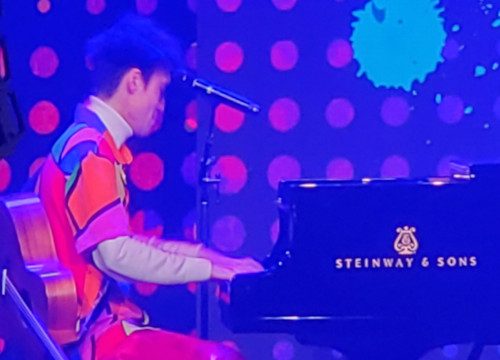
During the performance of Jacob Collier at the most recent NAMM show I was reminded that music makes us human, that beauty binds us together as a collective, and that the reason the music industry exists is to aid in the creation of art. I needed that reminder without which, the annual trade show featuring many of the great piano makers is just the sale of wares. I believe that people are feeling the uncertainty ...
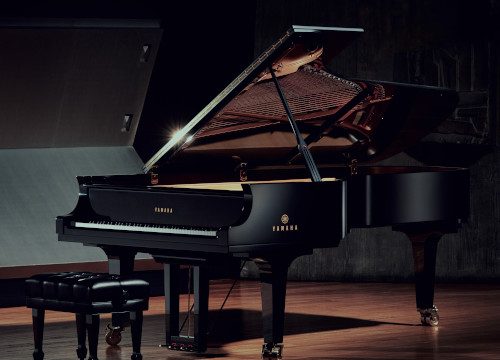
I used to have a teacher who would frequently say, “For every single grade point PAST 80%, it takes as much effort as the FIRST 80.” I believe this statement to be true from experience. The first 80 is the easiest. Chipping away at every point past that is the challenge. The bulk of the work can bring a project into shape but it’s the pursuit of excellence, that’s where the challenge lies. Yamaha is ...

The value of a piano is obvious ~ it’s the music that you make with it. But often, families are going through life changes which involve a house move and unfortunately, the piano needs to be sold. They invariably ask the question, “What are we going to do about the piano?” This question comes up because, as you can imagine, they’re not easy to move. We don’t simply pack them away in a cardboard box ...

You’ve been playing your piano for years now and the time has come to seriously consider downsizing the house and move into a condo. But what do you do with the piano? You love your piano and can’t imagine life without it and besides, you absolutely hate the idea of playing a digital keyboard. Many people don’t know that you can add digital functionality without compromising your existing piano. Yes, it is completely possible to ...
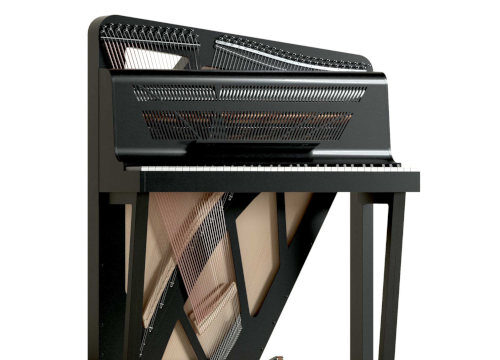
Many years ago, I remember seeing a piano in a museum similar to the one shown above (built in 1787 by Christian Gottlob Hubert. On display at Germanisches Nationalmuseum - Nuremberg, Germany). I have often wondered why acoustic portable pianos never really took off. Although we've seen more portable keyboard instruments like harpsichords, accordions or electronic keyboards, they operate completely different from a traditional piano in that they either pluck the strings, use air with ...
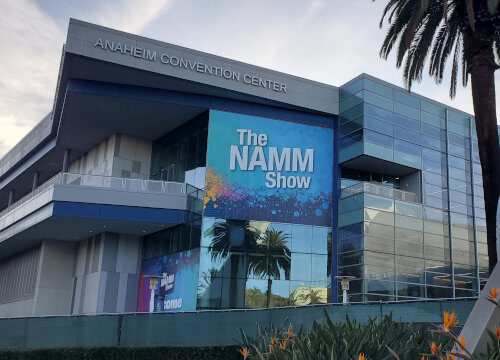
This was the first year since covid that the National Association of Music Merchants (NAMM) trade show was back to its regular January date and, in fact the first show where it felt back to normal. How was it? To answer that, I'm going quickly review the piano market over the last few years. Piano sales boomed during covid. Think about it - everyone was at home and with time on their hands, many turned ...